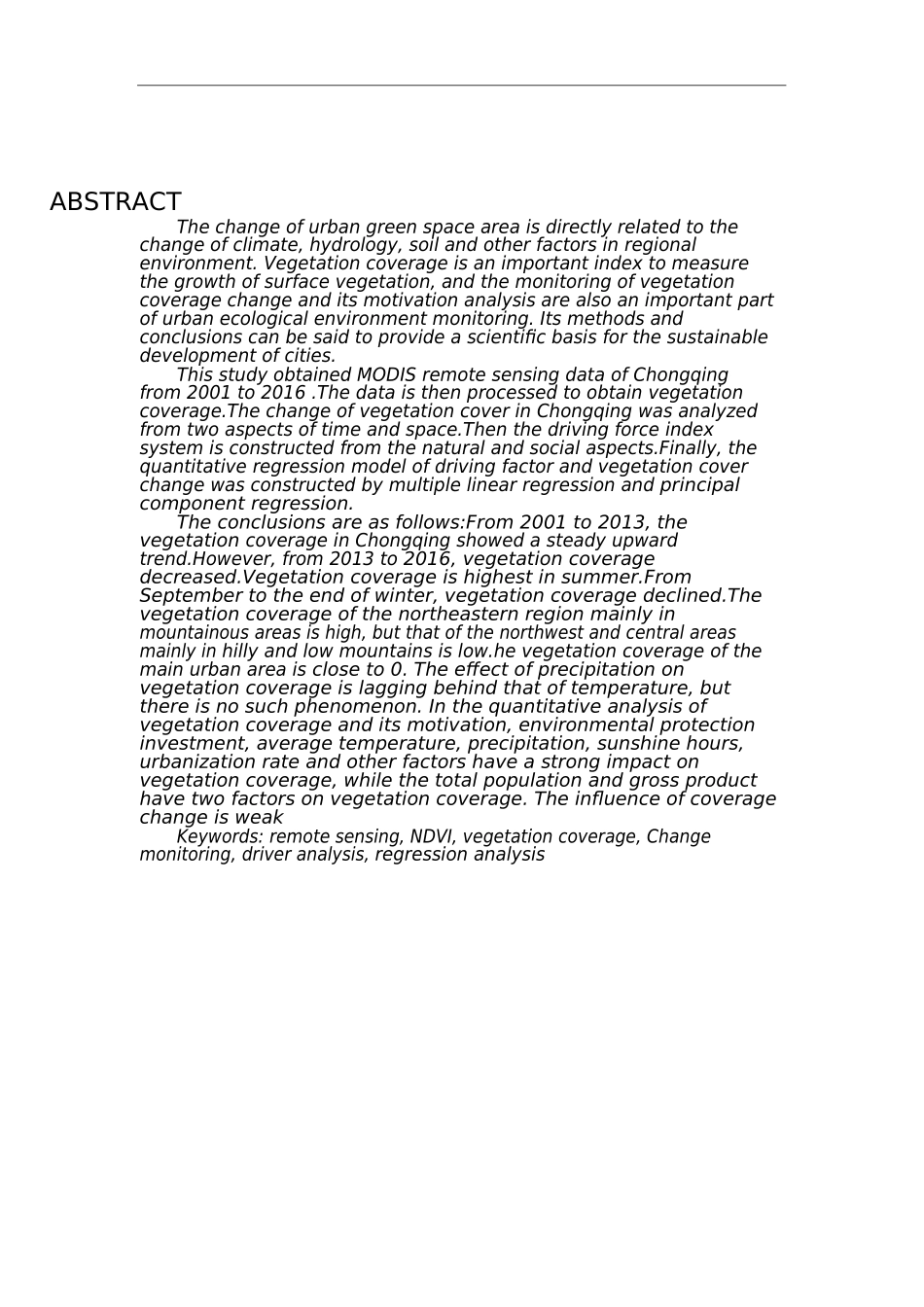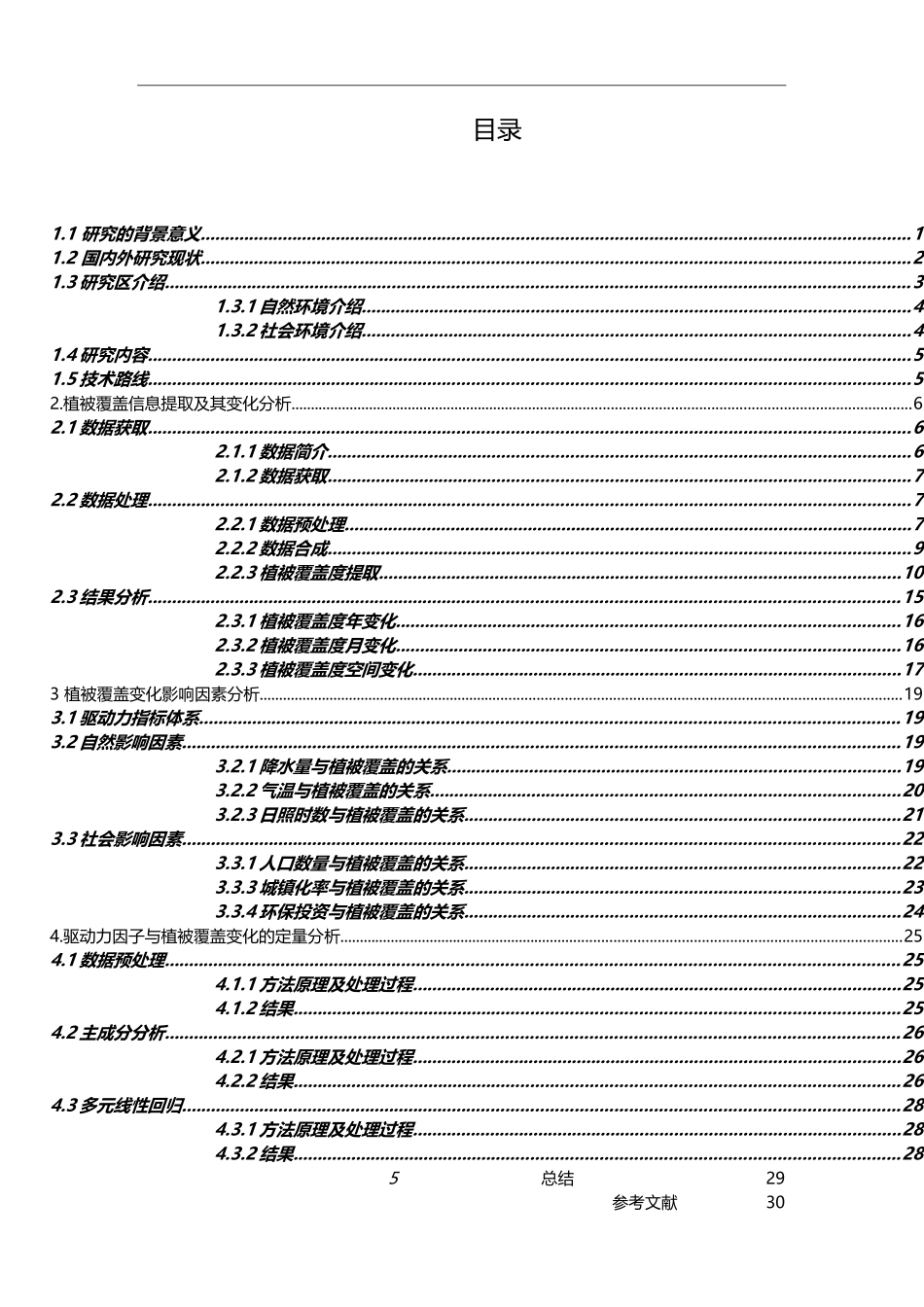摘要城市绿地面积的变化直接关系到地区区域环境内气候、水文、土壤等因子的改变。植被覆盖度是衡量地表植被生长状况的重要指标,而植被覆盖度变化监测与其动因分析也是城市生态环境监测的重要组成部分,其方法与结论可谓=为城市的可持续发展提供科学依据。本次研究获取了重庆市 2001-2016 年的 MODIS 遥感影像数据。在 ENVI 软件平台上,对 MODIS 遥感影像先进行预处理,再通过最大值合成或平均值法得到年 NDVI,最后基于二分模型原理获取植被覆盖度。从时间、空间两个方面分析重庆市植被覆盖变化情况;从自然及社会两方面构建监测与动因分析系统,最后运用多元线性回归、主成分回归方法对植被覆盖度变化动因进行定量分析。得出的结论有:在 2001-2013 年间重庆植被覆盖度呈现稳定上升趋势,但在 2013-2016 年间植被覆盖度出现了下降趋势,且在夏季(6、7、8 月份)植被覆盖度最高,从 9 月份开始直到冬季结束植被覆盖度呈现下降趋势;以山地为主的东北地区植被覆盖度偏高,以丘陵、低山为主的西部及东南地区的植被覆盖度比较低;主城区植被覆盖度最低;降水量对植被覆盖度的影响存在特定的滞后现象,而气温对植被覆盖度的影响不存在这种现象;在植被覆盖度与其动因的定量分析中,环保投资、平均气温 、降水量、日照时数、城镇化率等因素对植被覆盖度变化的影响较强,而总人口、生产总值两个因素对植被覆盖度变化的影响较弱。关键词:遥感,NDVI,植被覆盖度,变化监测,动因分析,回归分析,ABSTRACTThe change of urban green space area is directly related to the change of climate, hydrology, soil and other factors in regional environment. Vegetation coverage is an important index to measure the growth of surface vegetation, and the monitoring of vegetation coverage change and its motivation analysis are also an important part of urban ecological environment monitoring. Its methods and conclusions can be said to provide a scientific basis for the sustainable development of cities.This study obtained MODIS remote sensing data of Chongqing from 2001 to 2016 .The data is then processed to obtain vegetation coverage.The change of vegetation cover in Chongqing w...












